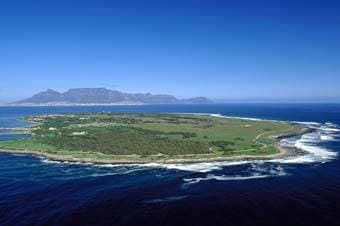
Description

Points of Interest
- Robben Island
Be sure to read the Special Notes further down this page for important requirements and restriction.
For over four centuries, Robben Island has been a place of punishment for exiles and prisoners as well as a place of confinement for lepers, lunatics and the sick. Since 1960, it has become synonymous with the political struggle against apartheid in South Africa. Political prisoners of the past have included Nelson Mandela and poet Dennis Brutus. The last political prisoners were released in 1991 and on 01 January 1997, the Robben Island Museum opened its doors to the public, with quite a number of the former political prisoners becoming island guides. In 1999, Robben Island was declared a Word Heritage Site.
Robben Island is an outcrop of rock formed by geological processes extending millions of years ago. Rising and falling sea levels have changed the appearance of the island periodically. Over the past 700,000 years, there have been 12 periods of lower sea levels during which the island has been linked to the mainland. Except for the administrative buildings and prison infrastructure, the island is primarily sand covered with somewhat limited vegetation. It is home to penguins, seals, chameleons, lizards, snakes, seabirds and a variety of buck. Robben Island hosts about 23 mammals and 132 bird species including the African penguin. Robben Island hosts the third largest colony of African Penguins. Depart on foot from the ship to the ferry terminal, located at the Nelson Mandela Gateway. After browsing through the museum, embark the ferry, which will transfer you across Table Bay to Robben Island. Upon arrival at the island, board a bus for a 45-minute orientation tour. Bypass the old leper colony, a Muslim shrine and a shipwreck. Also visit the lime quarry, where the former President's eyes were damaged permanently, and where personalities in the struggle were put to back breaking labor.
Thereafter, join a guided walking tour through the maximum-security block, led by a former political prisoner. A visit to Nelson Mandela's former cell is also included.
After your 2 hour visit to the island, return to the mainland by ferry - and then back to the ship by foot.
Special Notes:
The ferry ride can be up to 1 hour long depending on harbor traffic and weather.Tickets are non refundable once booked.
The island is operated by the government and local ex-prisoners are the guidse once you get to the island.
This tour is weather dependent so should it not operate, then the tickets will be refunded.
A walk is required to the ferry departure point, hence this tour is not recommend for guests with mobility challenges.
The transportation on the island does not have air-conditioning and use open windows.
There is an opportunity to purchase refreshments on the ferry at guests own cost.
Guests are required to bring ID or a copy of their passport with them in order to board the ferry. Names of participating of guests need to be provided in advance. Guests that are prone to seasickness need to take precautions
Details
Tour timeline may vary to avoid overcrowding, etc.